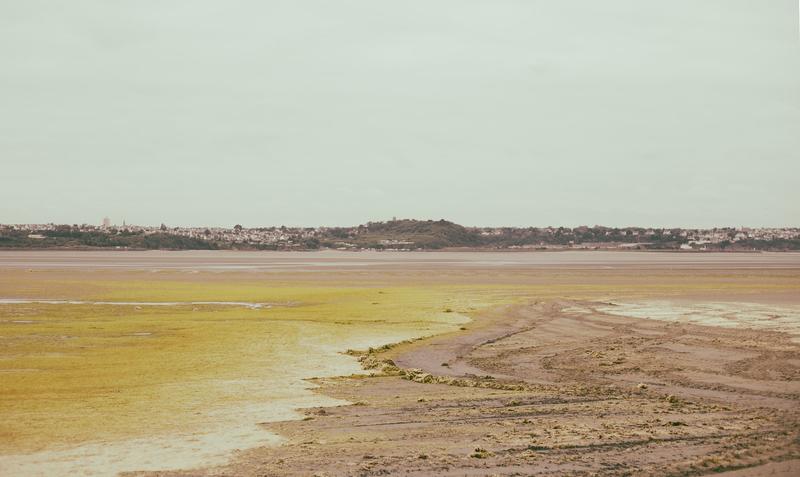Invisible Pollution
How the chemicals from our fields pollute our waters
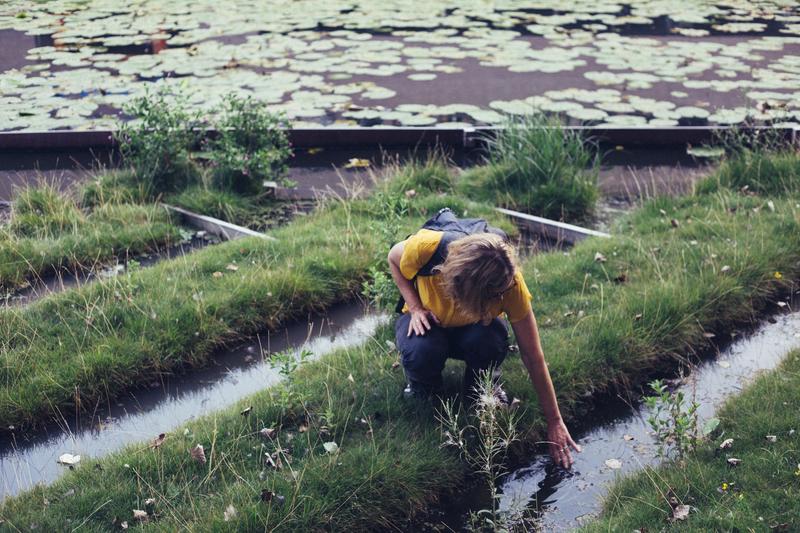
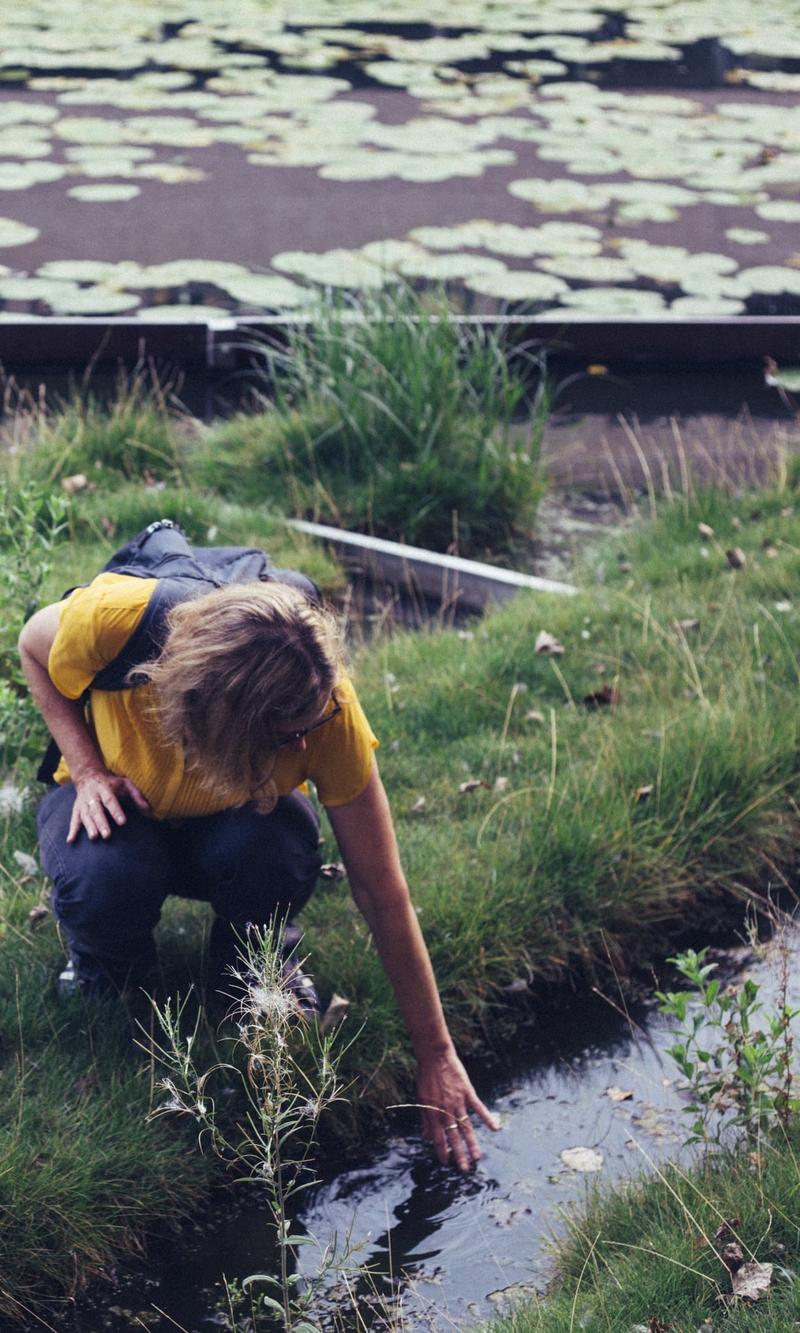
Credit: Jelena Prtorić
“Why don’t we see mass deaths of fish in Europe today? Because the pollution is much more subtle, yet ubiquitous. You can’t see it, you can’t smell it, so you think the water is fine,” says Martina Vijver, ecotoxicologist and professor at the University of Leiden. Vijver has been analysing the effect of pollutants on aquatic life in her living laboratory in Leiden, a quiet university town outside of Amsterdam, since 2017.
The Living Lab in Leiden consists of a series of ditches, containing colonies of various organisms, in which the real-life conditions of aquatic environments are simulated. Where, in a standard lab, test organisms are subjected to one substance at a time, in the Living Lab, multiple interconnected elements come into play, just like in nature. “Conventional lab tests are good because they provide a fast screening that you can replicate anywhere in the world. But they don’t replicate a real-life situation. If you’re well fed, don’t need to run from your predators, and a researcher treats you well, that will impact how you’ll respond to the toxic substances,” Vijver explains. She compares it to the difference between being in a small room with one other person versus being with a large group: heat, cigarette smoke and noise would affect us differently in these two scenarios, and the bigger the group, the greater the risk that we would end up becoming dehydrated and leaving with a headache.
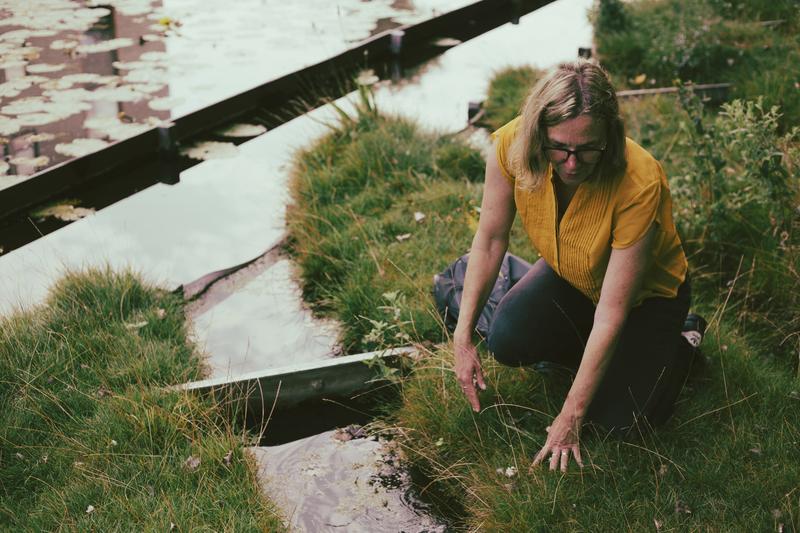
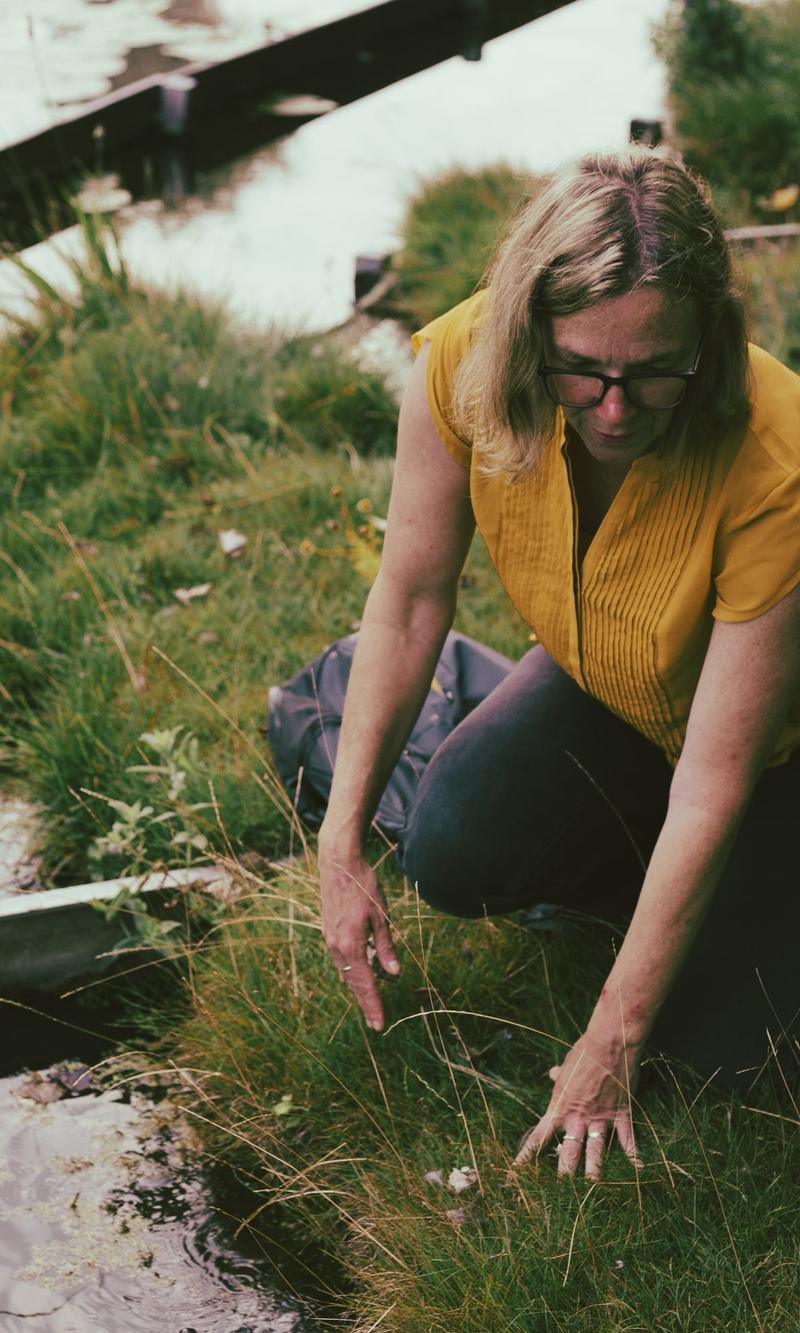
Credit: Jelena Prtorić
“The pollution is much more subtle, yet ubiquitous. You can’t see it, you can’t smell it, so you think the water is fine.”
Where, in a standard lab, test organisms are subjected to one substance at a time, in the Living Lab, multiple interconnected elements come into play, just like in nature.
In the Living Lab, Vijver introduces different man-made pollutants into the environment and looks at their impact on the connections between aquatic organisms. In an experiment with the neonicotinoid thiacloprid, an insecticide, Vijver and her team saw a dramatic decline in the numbers of “all the species groups studied, such as dragonflies, beetles and caddisflies.”
According to the EU Water Framework Directive, aquatic biology is one of the parameters examined in the course of water quality assessment. The assessment of ecological status focuses on selected aquatic plants and animals (generally phytoplankton, benthic aquatic flora, benthic invertebrates, and fish), which are used as indicators of the overall state of the water body. The assessment is generally based on species composition and abundance, but Vijver warns that abundance alone can be a misleading rubric. “If after [application of a pollutant] you can count the same number of species as before, it doesn’t mean that the connection between the aquatic organisms has stayed the same.” For instance, algal bloom is usually caused by an overburden of nutrients. But in some cases, the nutrient levels haven’t changed. “So maybe another pollutant affected the population of organisms eating the algae. So, algae will bloom, which will subsequently affect the whole community,” Vijver says.
Locked into biodiversity loss
In environments in which organisms face a variety of stressors – not just chemical pollution, but also noise pollution or drought – it is impossible to know to what extent the balance in an aquatic environment needs to be destroyed before reaching a “tipping point.” In her groundbreaking book Silent Spring, published in 1962, biologist Rachel Carson conjured an image of a community that reaches that tipping point. Overnight, the life in a town of prosperous farms, fruitful orchards, and clean water streams abundant in fish changes. The birds stop singing, the plants wilt, the fish die, and the farmers fall ill.
Carson’s imagined town represented a patchwork of misfortunes experienced by different communities across the US due to the harmful effects of pesticides entering the market without proper regulation. Her book caused an uproar within the industry and in parts of the scientific community, and resulted in the birth of grassroots movements demanding better protection from and regulation of chemicals.
Fast forward to forty years later, and our fields are still fertile, bird populations have declined but have not disappeared altogether, fish still populate our waters, and the EU boasts of having “the strictest pesticide laws in the world.”
But the loss in biodiversity, if not visible to the untrained eye, is widely known and documented. A 2019 report, Global Assessment Report on Biodiversity and Ecosystem Services, released by the independent intergovernmental body Biodiversity and Ecosystem Services (IPBES), found that, globally, 75 % of the land surface is significantly altered, 66 % of the ocean area is experiencing increasing cumulative impacts, and over 85 % of wetlands (by area) has been lost. Inland waters and freshwater ecosystems show rates of decline that are among the highest observed. The proportion of biodiversity decline suggests that, of an estimated 8 million animal and plant species (75 % of which are insects), around 1 million are threatened with extinction. In the EU, according to the figures displayed on the EU Commission site, 81 % of habitats are in poor status. The link between pesticides and biodiversity loss is well established in the scientific community, and yet, the sales of pesticides in the EU have remained stable for the past decade.
Regulation of pesticides
Pesticides – referred to as “plant protection products” – are used on crops to eliminate weeds or pests. These include herbicides (acting against weeds), insecticides (against insects), fungicides (against fungal diseases), molluscicides (against snails), acaricides (against mites), rodenticides (against harmful rodents), and growth regulators (control biological processes).
According to the precautionary principle embedded in the Treaty on the Functioning of the EU, “if it is possible that a given policy or action might cause harm to the public or the environment, and if there is still no scientific agreement on the issue, the policy or action in question should not be carried out.” The precautionary principle also applies to the Regulation about putting plant protection products on the market.
In the EU, pesticides are regulated at two levels: the active substances are first approved at the EU level, while the Member States authorise products that contain approved active substances. Approved active substances should not have any immediate or delayed harmful effects on human or animal health, directly or through drinking water, food, feed or air, through exposure in the workplace, or through cumulative and synergistic effects, and they should not have any unacceptable effects on the environment (e.g., with respect to biodiversity). Yet, the current regulation presents different loopholes. As the NGO Pesticide Action Network points out, most of the data in the dossiers are produced by pesticide companies; the full reports of regulatory toxicity studies needed for pesticide approval are generally unpublished and cannot be evaluated by independent experts or the general public, and there is no obligation to register the tests in advance and report all of their results, which allows the industry to “cherry pick” which studies to include, or which adverse effects to report and which to conceal, in order to influence the conclusion of the assessment.
So, who has the power to do something about this? Two German scientists set out to understand why stronger political action isn’t being taken. Broadly, the EU countries can be divided into three groups – none of them actively pushing for more stringent regulations. “In the EU, there are countries like Germany thinking that we have a good regulatory system, and [are] doing enough; there is an Eastern European group saying that they need industrial agriculture with pesticides and fertilisers to catch up with more developed countries, and the Southern group tends to say they are feeding the Northern part of Europe, so they shouldn’t be blamed alone for the pesticide use,” says Frank Hüsker, a political scientist and researcher on water governance, micropollutants and nature-based solutions at the Helmholtz Centre for Environmental Research in Leipzig. Hüsker and his colleague Robert Lepenies, president of Karlshochschule International University, have studied why the pollution of water bodies with pesticides still persists, despite stringent regulation. “We wanted to understand the political aspect of it,” explained Lepenies. They used the framework of regulatory lock-in, or how the “inertia of technologies, institutions and behaviours individually and interactively limits the rate of systemic transformations,” to explain why the wide use of pesticides persists. The first lock-in is due to land use patterns in the EU, which are heavily subsidised by the EU’s agricultural policy, which rewards the largest areas under cultivation, giving agricultural players an important role at the EU level. Additionally, consumers' interests in food safety and autarky are perceived as being extremely important factors.
“An argument used in both Brussels and Germany is that the EU has the best regulatory system in the world, if pesticide regulations in the EU were to be further strengthened, this would lead to an increase in in imports of food products.”
The argument of food security is also used by the pesticide industry to call for delays in the introduction of various environmental measures. The Brussels-based EU lobby watchdog, Corporate Europe Observatory, showcased how the industry seeks to undermine the EU's new sustainable agriculture policy, known as Farm to Fork, with tactics cranging from scaremongering with ‘impact studies’, mobilising third countries (notably the US) to put pressure on the EU, to distracting decision makers with voluntary commitments or other false solutions.”
Another major lock-in stems from the regulatory framework surrounding the authorisation of substances. The whole discourse surrounding the substances is hermetic and complicated, and is only accessible to a small circle of experts. “To enter a room at the European Food Safety Authority, you basically need an ecotoxicology degree,” jokes Lepenies. “We rely on the scientists to explain [to] us what is happening there. And data alone doesn’t really answer the question. The general audience doesn’t necessarily know how to interpret it,” he adds.
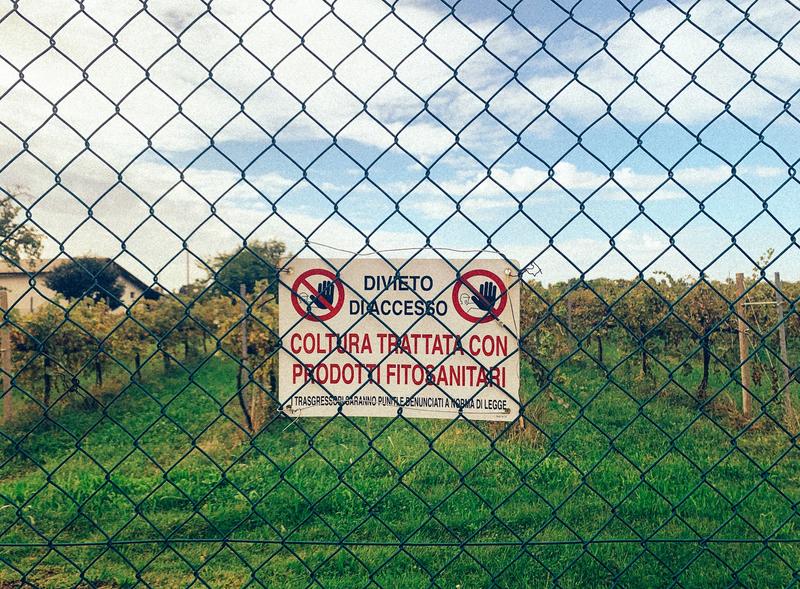
Credit: Jelena Prtorić
Data Conundrum
The data gaps are also visible at the level of water monitoring. In order to measure the concentrations of pesticides in small lowland streams in Germany, Matthias Liess, an ecologist at the University of Leipzig, and his team installed automatic samplers in 101 small agricultural streams across the country. Each sampler costs €8000, and sends an SMS upon performing measurements to a student, who is responsible for picking up the sample and taking it to the lab, where it is analysed.
“This was a huge effort. If you add up all the rides we made to pick up the samples, they equal the distance of two and a half times around the world,” Liess says. But the huge ecological footprint was worth it, Liess thinks, because the results were striking. “Measured pesticide concentrations exceeded current regulatory acceptable concentrations in 81 % of the agricultural streams! Also, In roughly 80 % of the streams, we [found] strong effects on the invertebrate community. According to the Water Framework Directive, there shouldn’t be such a change in communities,” he says.
The experiment also points out flaws in the way the monitoring is usually performed. There is no guarantee that the usual measurements will coincide with periods of heavy rainfall, when pesticides are washed off the fields and their concentrations peak in the streams. Moreover, small streams are likely to be excluded from national measurements in the first place, since water monitoring is often reserved for larger water bodies (although smaller streams are, as Liess puts it, “extremely important, like capillaries in our body,” carrying the oxygen – but also toxins – through our system). Moreover, there is the question of concentrations, parameters being used to measure them, and what is being measured in the first place.
According to the EU legislation, the Member States need to monitor a number of priority substances (mainly pesticides, industrial chemicals and metals, in the case of surface water, alongside nitrates and the active substances in pesticides in groundwater), and their quality standards or threshold values stipulated in the legislation should not be exceeded.
But some of the substances listed, such as the pesticide atrazine, have been banned in the EU for decades, while the threshold levels for other substances haven’t been updated according to the levels scientifically determined to be safe. In October 2022, the European Commission proposed an update of the water pollutants to be more strictly controlled in surface waters and groundwater, adding 25 new substances to the list, including a range of pesticides and their metabolites (with the herbicide glyphosate probably being the most widely known). However, the new proposal doesn’t require the use of screening techniques to monitor what effect the mixture of substances might have. “Most substances were still added as individual substances, which both risks that regulated substances are substituted with others with similar effects and it is already well-known that individual substances can have negative effects if they appear in mixtures (even if each substance is present at or below the ‘safe’ threshold concentration),” explains Sara Johansson from the European Environmental Bureau, a network of environmental citizens' organisations in Europe. The mixture effects could also explain the decline in the numbers of certain aquatic organisms, while some mixture effects have been associated with neurotoxicity or with effects on endocrine regulation and/or reproduction in animal and human models.
New legislation promises better data
In October 2022, a review of the legislation on Statistics on Agricultural Inputs and Outputs (SAIO) was voted on in the European Parliament. To date, the data collected have only included pesticide sales, and only every five years. The new legislation stipulates that pesticide data are to be collected annually, and in greater detail. The data on sales and use are to cover all pesticides, whether they are sold or used on the basis of a standard authorisation or an “emergency” authorisation, and will distinguish between “conventional” and organic farming. The data on chemical inputs in agriculture are to include not only pesticides, but also fertilisers and veterinary products.
However, the annual data collection is only supposed to start in 2028 (for the reference year 2026), which means that the relevant data on pesticides might not be collected soon enough to measure progress towards the pesticide reduction targets set out in the Farm to Fork Strategy. Moreover, the data on pesticide use will only be collected every year if and when another EU act is adopted that would require professional users of pesticides to transmit their pesticide use records in electronic format.
“As humans, we don’t necessarily need to care if the sensitive organisms in streams are vanishing, although this goes against the Water Framework Directive. But, if the organisms are not present anymore because of pesticide pollution, I would hesitate to drink this water,” says Liess.
Glass half full of pesticides?
In Europe, we generally don’t consume raw drinking water – it comes to our pipes only after various degrees of treatment. But in September 2022, the French newspaper Le Monde published a report showing that at least 12 million people – some 20% of the population – in France have consumed water showing exceedances in pesticides and their metabolites (substances formed during the process of pesticides’ metabolic degradation in plants or the environment). If the news of pesticide presence in water has come as a shock to a larger portion of the population, some have been struggling with pesticide pollution in drinking water for years.
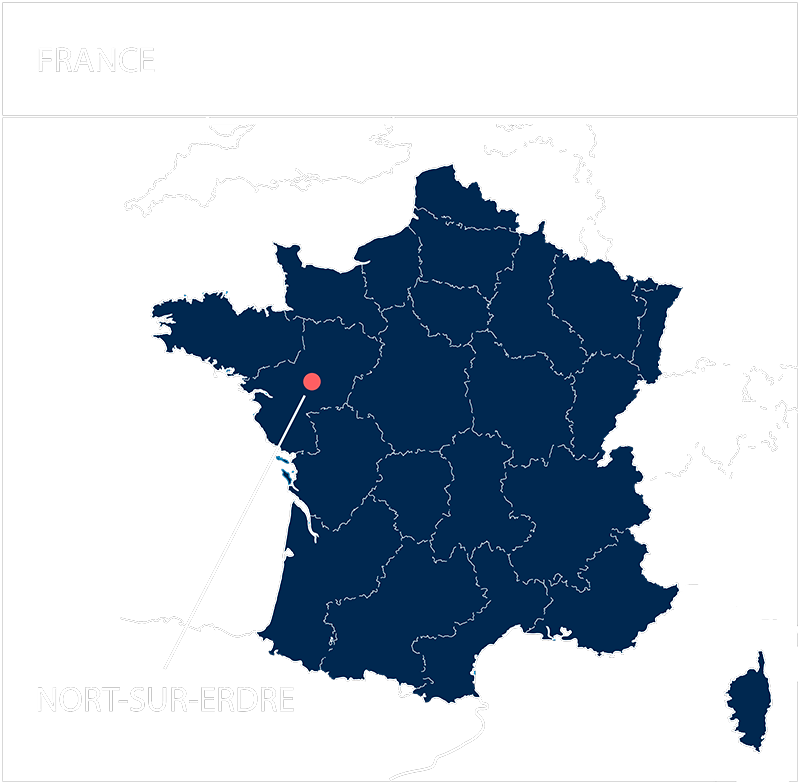
In March 2022,
some 300 people gathered to sound the alarm about water quality in the area of Nort-sur-Erdre, a town of around 9000 people, located some 40 kilometres from the port of Nantes. The catchment area of the Plessis-Pas-Brunet, outside of the town, supplies some 80,000 inhabitants with drinking water, in which the metabolite (S)-Metolachlor was found in 2016. The regional water provider Atlantic’Eau started an upgrade of the water treatment facility to be able to properly eliminate the metabolite.
Pesticides in France are monitored by regional health authorities (Agences régionales de Santé, ARS), which determine a list of molecules to monitor, while drinking water networks also carry out their own checks. The fact that pesticides in drinking water haven’t been discovered Europe-wide doesn’t necessarily mean that French water providers are doing a lousy job – it could simply indicate data gaps in other countries. A 2016 assessment of the Drinking Water Directive, which regulates water safety at the EU level, pointed out the fact that 40 % of the small water supply zones, serving about 65.5 million people (13 % of the EU population) were not in compliance with the Directive’s regulations, and 19 % were not monitored in accordance with the directive’s regulations. It also highlighted monitoring provisions that were inflexible and not cost-effective, lists of pollutants that were not regularly updated, and emerging pollutants, some of which represent a potential threat to human health (such as endocrine disruptors), not being monitored. The newest revision of the Directive from 2021 should solve some of the issues highlighted, namely through the addition of more substances to the monitoring list.
“The most efficient thing is to address the pollution at its source,” says Daniel Petry from EurEau, the European Federation of National Associations of Water Services, representing national drinking and wastewater service providers, both private and public, from 30 countries. “We are now able to detect pesticides and metabolites in drinking water at very low concentrations, but the problem is that those are hard to eliminate. Water providers need to develop high-tech solutions to purify water and remove those substances. The elimination is very costly, and can be energy intensive,” Petry points out.
In the Netherlands, about 40 % of drinking water is derived from surface water, and for the time period 1991–2000, the total costs caused by the presence of pesticides in sources of drinking water were calculated at €244 million. In France, a study from 2015 estimated that, every year, a total of €260–360 million is spent on treatment linked to cleaning drinking water of pesticides.
Although the polluter pays principle is enshrined in the EU Treaty and stipulates that the cost of preventing, reducing or repairing environmental damage should be borne by the polluter (and not the taxpayer) in cases of water pollution by substances used in agriculture, it is hard to implement this rule. Since the catchment areas are large, it is hard to determine who has actually polluted, and to what extent. A 2021 report by the European Court of Auditors analysing applications of the polluter pays principle across EU environmental policies and actions concluded that polluters do not bear the full costs of water pollution, with the report stating that “agriculture, the sector exerting most pressures on renewable freshwater resources, contributes the least. A 2011 study estimated that in France, additional expenses paid by households due to agricultural pollution were up to €494 per household per year for the most affected localities.”
In Loire-Atlantique, Atlantic’Eau needed to invest €6.5 million for the modernised facility. This cost included a diapason of modernisation works, so it is hard to estimate the cost of the elimination of S-metolachlor alone, although Atlantic’Eau’s estimation puts it at between €2.5 million and €3 million for a production of 600 m³/h. According to Laurent Caderon, president of Atlantic’Eau, in order to achieve a significant and rapid reduction in nitrate pollution, it would be necessary to eliminate all crops within a 750 m radius. There is no reliable model for pesticide leaching. “In negotiations with the agricultural professionals, we based ourselves on the same surface area [as for the nitrates], but ideally all pesticides should be banned from the catchment area,” he says. But that is only wishful thinking at the moment, since this is fertile land, coveted by farmers. “For now, the cost of the water pollution is shouldered by the customers from the entire region we cover, which is why the cost hasn’t skyrocketed for those who are getting the water from Plessis-Pas-Brunet. But technical solutions are not long-term solutions,” he adds. Yet, he believes that it shouldn’t be up to the farmers to shoulder the extra cost of water purification. “Farmers use what they are given, and they are told these products are safe. It’s the industry that should be held accountable.”
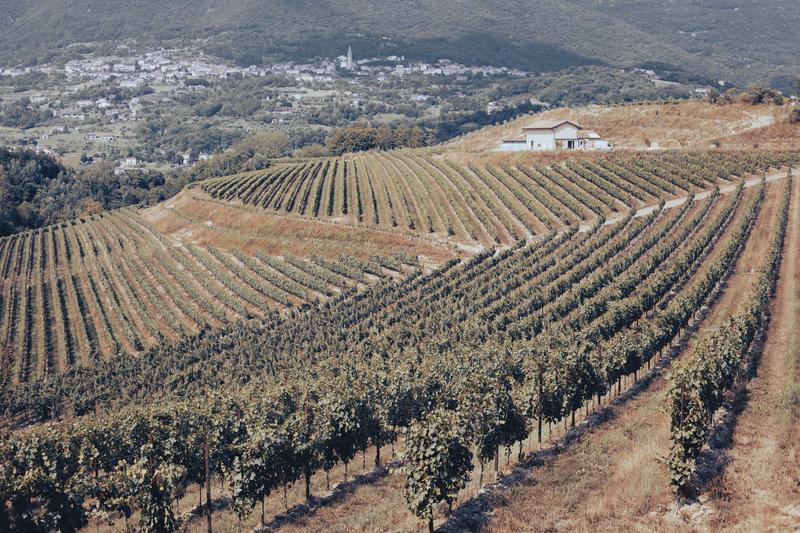
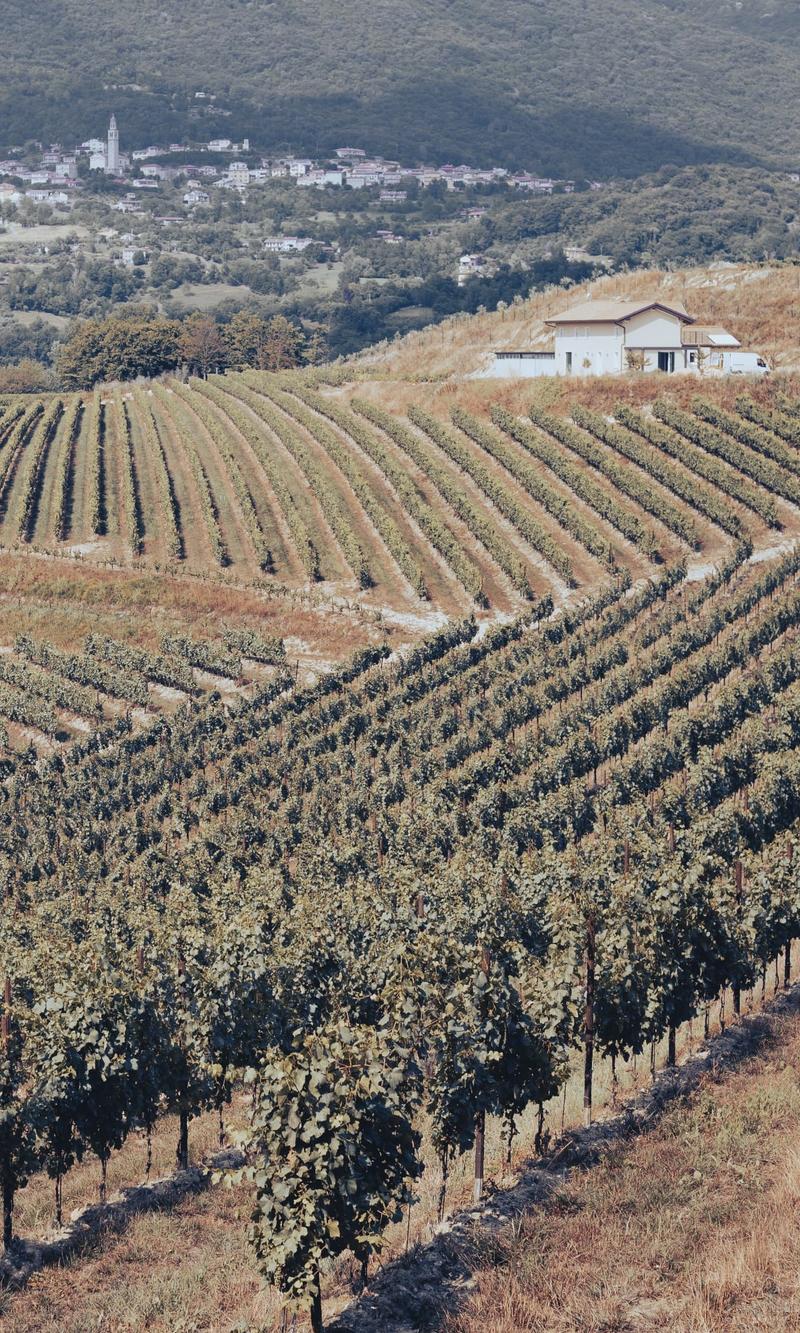
Credit: Jelena Prtorić
